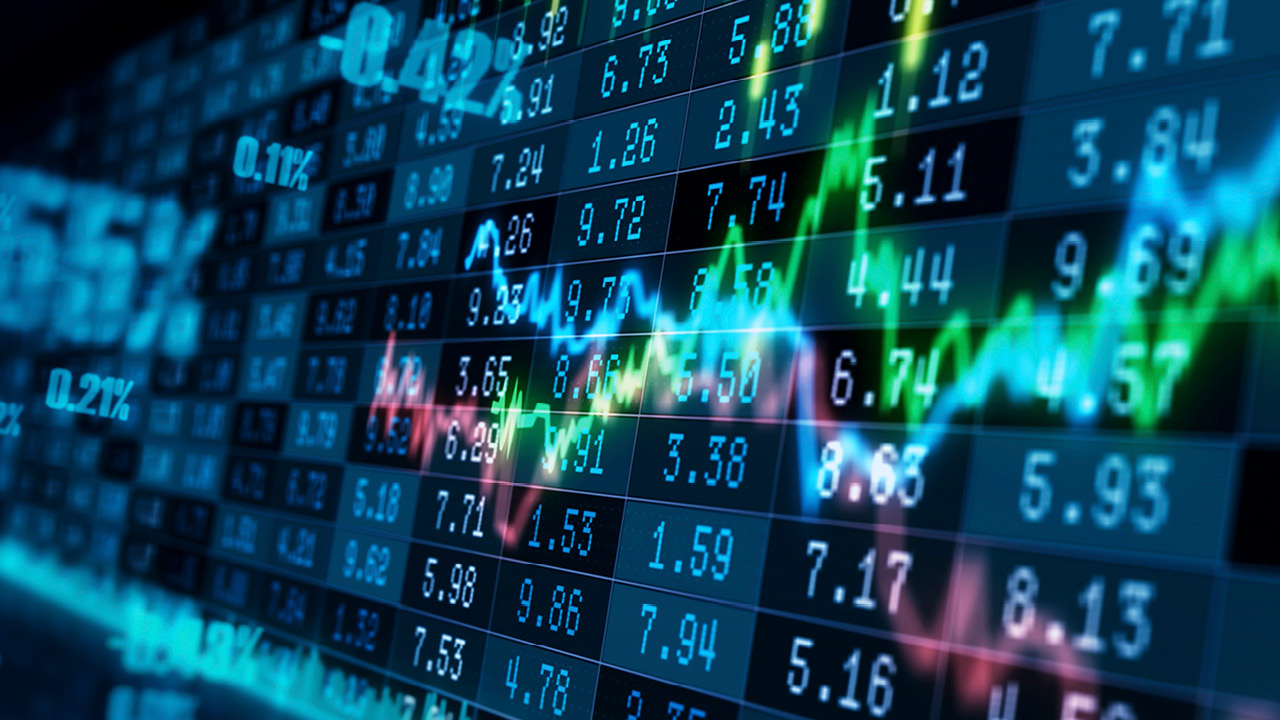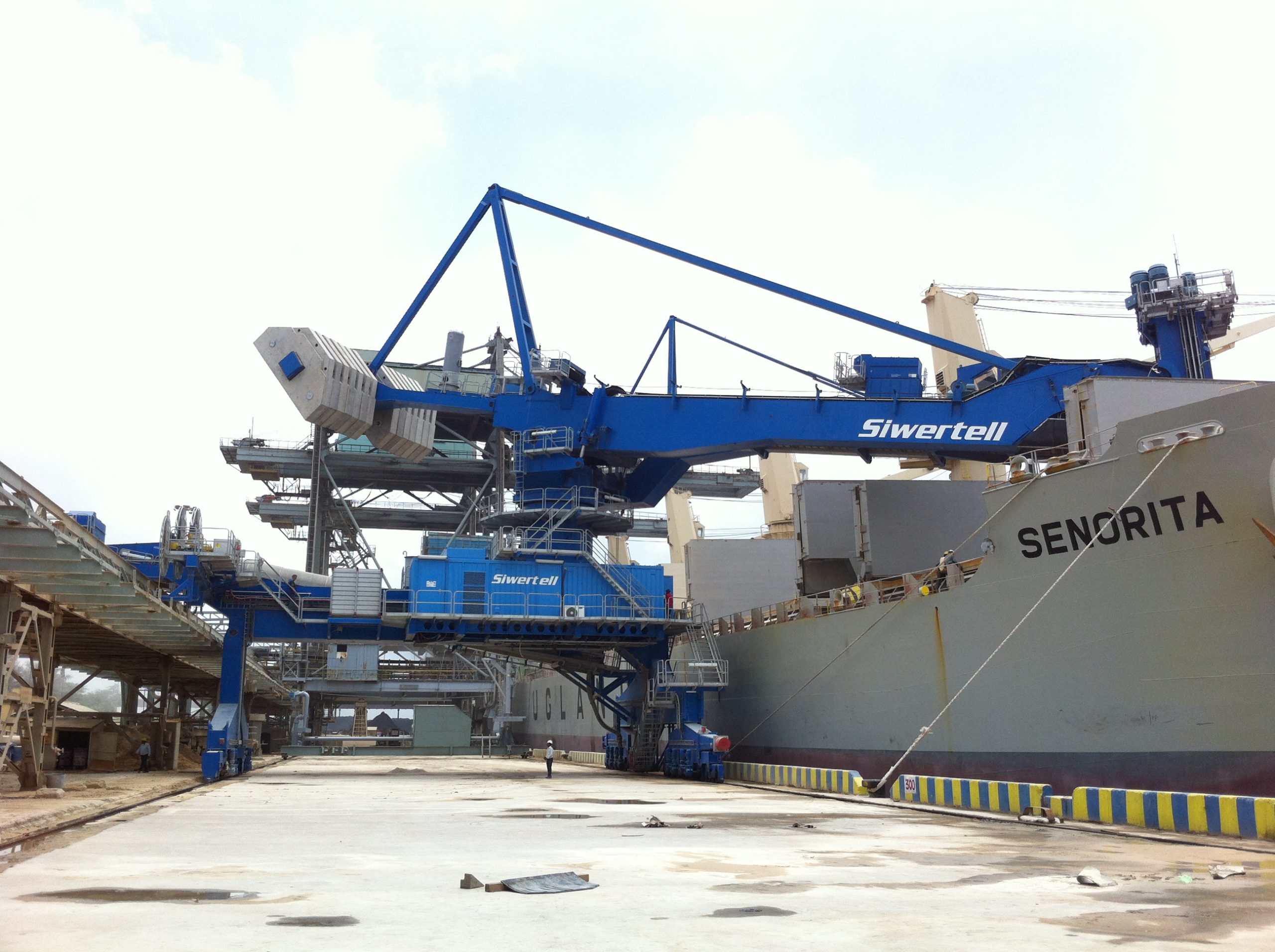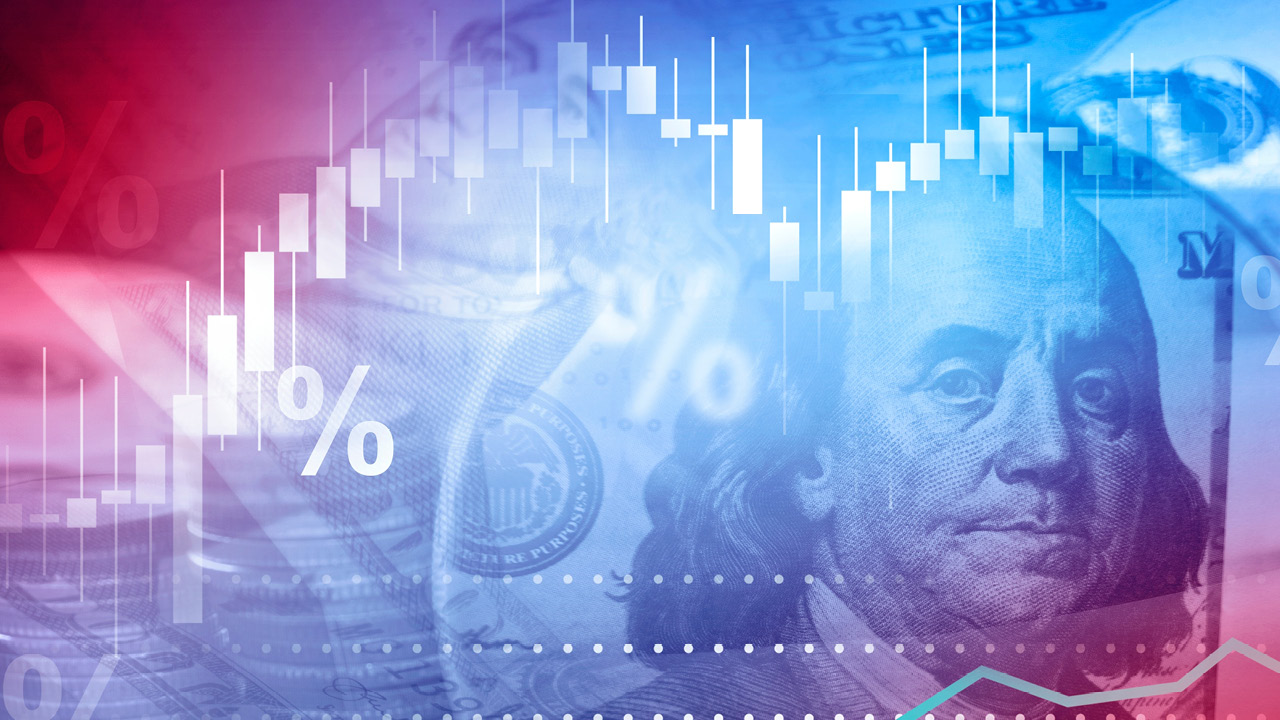Sulphur 420 Sep-Oct 2025
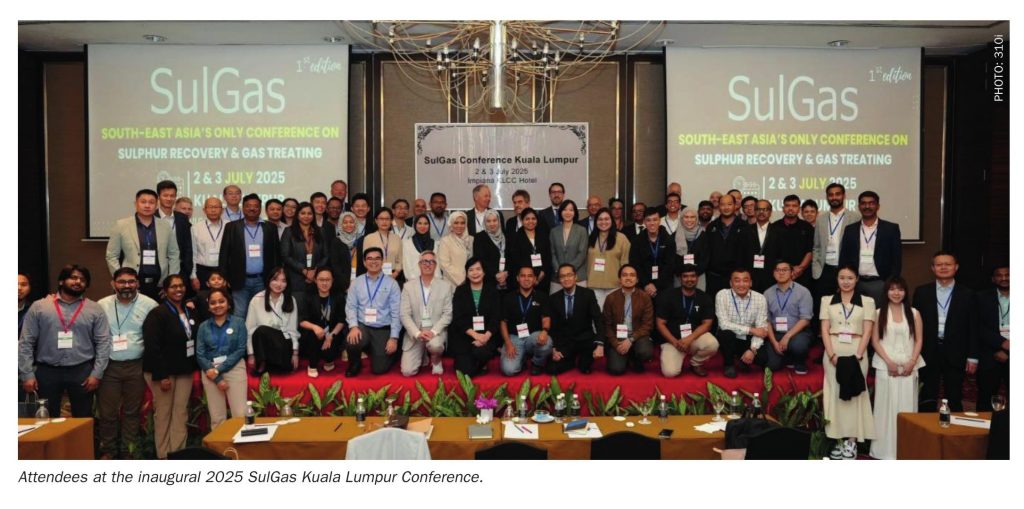
15 September 2025
SulGas® Kuala Lumpur 2025
CONFERENCE REPORT
SulGas® Kuala Lumpur 2025
SulGas® KL, South-East Asia’s sulphur recovery and gas treating conference organised by Three Ten Initiative Technologies LLP, made its debut from 2-3 July 2025, at Impiana KLCC, Kuala Lumpur, Malaysia.
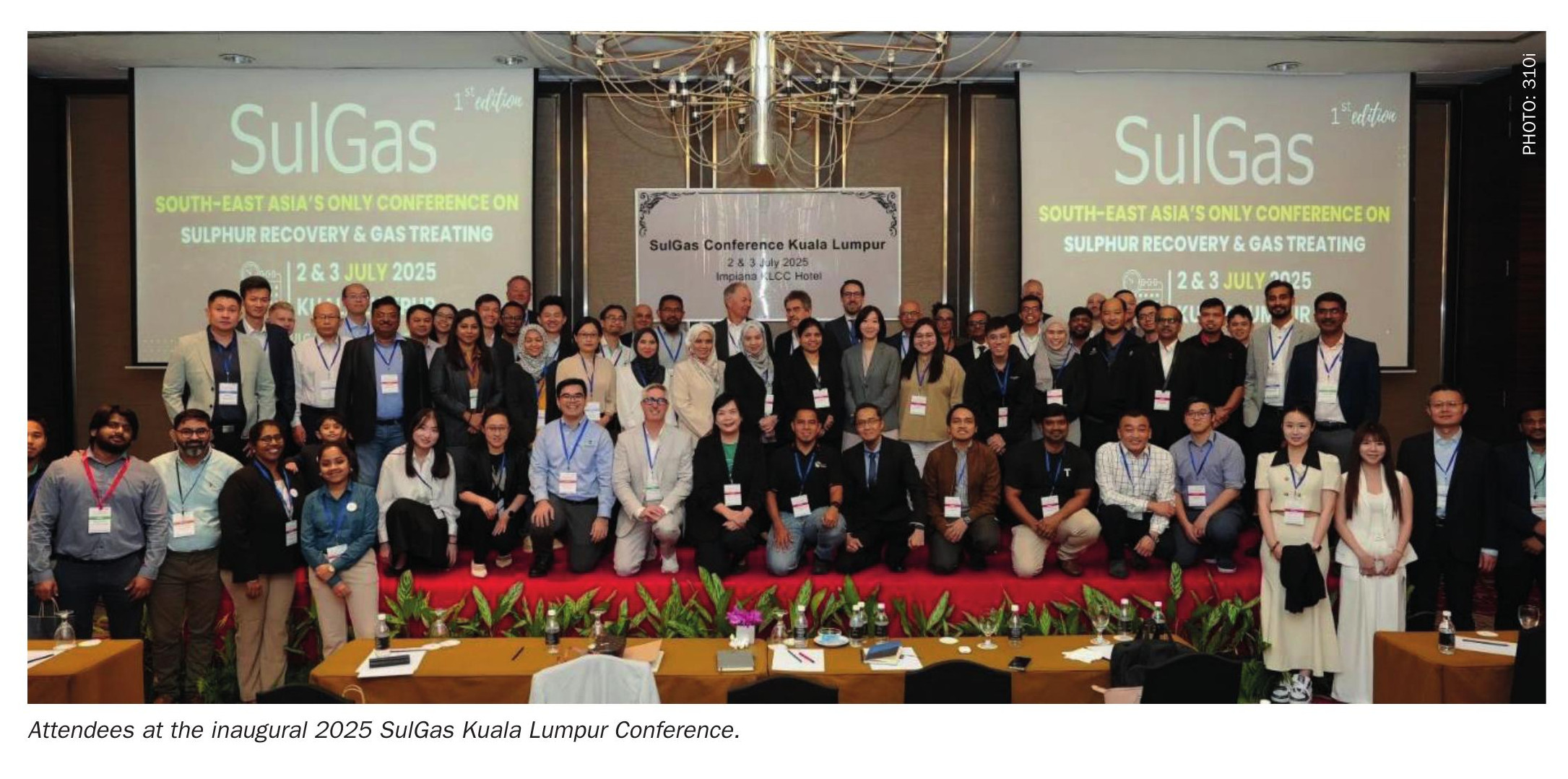
Building on the success of its annual SulGas conference in India, Three Ten Initiative Technologies LLP has introduced a new regional event in South-East Asia, SulGas® KL, providing another regular platform where experts can gather for a technical forum on sulphur recovery and gas processing. The event saw participation from over 70 attendees, representing more than 29 companies across various areas of sulphur handling and gas processing, including public and private refineries, the oil and gas industry, petrochemicals, chemicals, and related sectors.
SulGas® KL 2025 provided an ideal opportunity for experts to engage with their peers, share best practices and troubleshooting tips, and discuss advanced technologies and operating procedures with technology providers, vendors, and licensors.
The conference featured 17 speakers in interactive technical sessions, fostering maximum technical exchanges among participants. Additionally, a dedicated exhibition area with full-day access for all delegates was made available.
The agenda was split into seven sessions across the two days with a mixture of presentations followed by detailed panel discussions which sparked valuable dialogue between the audience and speakers. The main themes at the conference were:
• SRU diagnostics – advanced monitoring and control, troubleshooting, automation
• Amine treating – core principles, design insights, advanced simulation, optimisation
• SRU reliability – technology deployment, opex optimisation, reliability experience
• Dehydration and cold box systems – exchanger protection, reliability experience, performance optimisation
• Emissions management and decarbonisation – reducing CO2 footprint, SOx abatement.
SRU diagnostics
Jochen Geiger of Ametek Process Instruments started off the programme by sharing insights on how to identify and respond to COS and CS2 in a sulphur recovery unit using modern process instrumentation. A combination of application-specific analyser designs, tailored sampling systems and strategic technology choices provides a holistic approach to optimise SRU operations. He stressed the importance of knowledge, understanding and awareness training to maintain the instruments and for reliability and safety.
Bob Poteet of WIKA followed up on his presentation from SulGas, India, with an update on WIKA’s innovative method for monitoring the refractory condition in Claus units and how to measure the temperature inside without a purge. The challenge has been how many measurement points to install and what technology to use. A proven solution is now available.
Rounding off the session, Yifeng Liu of Shandong Sunway Chemical Group Co. shared experiences elaborating on the necessity and methods of establishing an early pressure warning system for the sulphur recovery unit to maintain continuous and stable operation. System pressure escalation can originate from multiple factors, including combustion-induced carbon deposition, ammonium salt crystallisation, sulphur blockage caused by cold-hot steam mixing and rupture of heat tracing jackets etc. Implementing optimised design, enhancing control parameters and conducting scheduled inspections of critical components can effectively mitigate or prevent operational anomalies.
Amine treating
Debopam Chaudhuri of Fluor discussed the problem of SO2 breakthrough in the SRU/TGT and how continuous monitoring of key operating parameters has the potential to reduce and even eliminate the chances of SO2 breakthrough (see article Sulphur 418, p.36).
Attacking amine foaming through enhancement of operation design was the topic of the presentation by Mohd Firdaus Sabturani of Petronas who drew upon his extensive experience of operating an amine based AGRU in an LNG processing plant where the issue of foaming is commonly encountered. Root cause failure analysis conducted on various foaming incidents in Petronas has identified several common root causes and led to recommendation for operational and design improvements which has improved the performance of the amine treating units and reduced foaming issues significantly to achieve a stable AGRU operation.
Dissolved acid gases are usually removed from LPG and various other hydrocarbon liquids using amine solvents in liquid extraction-type columns. Until now, the best one could do to simulate such columns was to treat them as a set of one to three equilibrium stages, then apply an unknowable stage efficiency to arrive at a performance estimate. Prashanth Chandran of Optimized Gas Treating announced a breakthrough in modelling technology for mass transfer rate-based simulation of liquid treaters. For the first time it has been possible to simulate liquid treaters rationally and to relate performance to the treater design and its characteristics.
Wan Ahmad Akram Wan Yaheya of Petronas presented a study highlighting both the advantages of plate frame heat exchangers (PFHEs) and the common fouling and leakage issues they face. Short- and long-term recommendations to improve the performance and reliability of PFHEs, along with suggestions for enhancing filtration capacity to reduce fouling were provided.
SRU reliability
V. Kamesh Jayanti of Engineers India Ltd shared experiences from troubleshooting case studies carried out in various SRUs to improve SRU reliability. EIL has adopted a systematic methodology to diagnose issues and to identify the root cause of the problem. Case studies discussed in detail were: channelling of process gas in a converter, severe pressure drop in a reactor and issues during TGTU commissioning.
Ceramic ferrule and tubesheet lining problems are often the first symptom of a problem in sulphur recovery unit, but failure analysis is a very complicated, systematic process, requiring extensive knowledge and experience in order to reach the proper conclusions. Domenica Misale-Lyttle of Industrial Ceramics presented a blueprint that has proven to be a useful tool for methodical visual tubesheet protection system (ferrule lining) inspection.
Applying monitoring tools to share data near real-time between the operating company and the licensor enables a knowledge exchange between the unit engineer/operations and the technology specialists. Eric Roisin of Worley Comprimo provided an example of the main learnings and improvements with respect to energy optimisation that were achieved by Slovnaft by following this approach (see article Sulphur 418, p.41).
A new generation of highly active titania-based tail gas catalyst was developed by Euro Support that offers a significantly improved low temperature performance compared with the alumina-based catalysts that are available on the market. Roelof ten Hooven of Euro Support presented the benefits of using titania in Claus and tail gas analysis.
Optimising reliability at Petronas Melaka’s oxygen enriched sulphur recovery unit through operation improvements was the focus of the presentation by Mohamad Azahar Ahmad of Petronas and Jan Kiebert of the SGS Sulphur Experts. Process and operational improvements, tighter operation control and better refractory repairs are some of the activities executed since 2022 which has resulted in reducing existing hotspots caused by refractory failures and in some cases eliminating hotspot occurrences.
Dehydration and cold box systems
Cold box protection is central to efficient operation of any cryogenic gas processing scheme but the compact high efficiency exchangers in the cold box section are subject to fouling form several different mechanisms. Arnab Dutta of Transcend outlined the operational challenges faced by a world-scale facility due to cold box fouling and a separated cryogenic gas processing plant caused by molecular sieve dust filter bypass. Following process contamination surveys and an inspection and review of the filtration equipment, upgrades to the filter vessels were recommended and implemented which successfully addressed the problems.
Sominidevi Veloo of Petronas demonstrated that enhancing the performance and reliability of molecular sieve dehydration units does not always require large capital investments or major equipment changes. Case studies were used to show that incremental improvements through operational excellence, robust monitoring and procedural discipline can lead to significant benefits in terms of energy efficiency, equipment longevity and overall plant reliability.
Emission management and decarbonisation
Refineries offer unique opportunities for decarbonisation efforts. Yulius Rizal of Topsoe explored opportunities to enhance overall energy efficiency, by revamping or replacing existing Claus-based SRUs with Topsoe’s Wet Gas Sulphuric Acid (WSA) technology. A gradual carbon footprint reduction of 2-3% per Claus line replaced by WSA SRU offers a financially viable and strategic pathway to achieving industry decarbonisation goals.
Noradnin Hafeeza Haji Nawawi of Petronas presented an assessment of technology solutions to meet the emission limit on SOx emissions for new and existing thermal oxidisers. The evaluation was carried out based on proposals from various technology providers followed by a technology risk assessment. The study identified feasible process technologies such as a caustic scrubber, seawater flue gas desulphurisation and ammonia based desulphurisation to meet the desired emission limit at the thermal oxidiser outlet.


